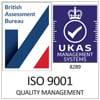Recruitment automation has been one of the biggest buzzwords in the recruitment industry over the last few years. There's been a gradual realization that recruitment automation technology isn't about replacing the human touch. Instead, its purpose is to automate manual, time-consuming tasks to give recruiters more time to focus on the human elements of the recruitment process - building relationships with candidates and clients.
While the application of automation isn't new in recruitment, the events of the past eighteen months have certainly accelerated the role automation plays with the transition to a more digitized recruitment process. The widespread shift to remote and hybrid working means that a larger part of the recruitment process will have to happen virtually. Furthermore, the pandemic’s impact on the recruitment industry has forced recruitment businesses to operate with a leaner workforce. These two developments, working in tandem, have led to recruitment automation playing an even more prominent role in recruiters' day-to-day work
In this article, to get a better understanding of the role of recruitment automation in the recruitment industry, we’ll look at:
- What recruitment automation is
- The common recruitment tasks and processes you can automate
- How businesses have benefited from using recruitment automation
- Some questions to think about when deciding whether recruitment automation is something you should think about implementing into your recruitment workflows
What is recruitment automation?
Recruitment automation can be defined as a group of technological solutions that automate tasks and workflows to allow recruiters to work more efficiently. This technology evolved from RPA (Robotic Process Automation) which created ‘software robots’ to help people process large-scale data-driven work faster and more accurately.
Many recruitment automation solutions rely on technologies such as ML (Machine Learning) and AI (Artificial Intelligence) to automatically complete recruitment tasks that would otherwise have to be carried out manually.
To give some context, these technologies can be briefly defined as follows:
Machine Learning - When algorithms learn from data to improve accuracy and identify patterns that can be used as the basis for decision-making and predictions.
Artificial Intelligence - AI involves using methods based on the intelligent behavior of humans to solve complex problems.
How you can use recruitment automation
Research shows that the majority of businesses have either begun implementing recruitment automation or plan to do so. Studies conducted by Sage have found that 24% of businesses have started using automation for their recruitment processes and another 56% of managers are looking to make that transition in the next 12 months.
Some of the most common recruitment processes businesses can automate include:
Pre-hiring processes such as:
- posting new job ads
- candidate sourcing
- collecting an applicant's contact information, experience, skills
- pre-screening candidates
- gaining consent to contact under GDPR
- tracking a candidate's application
Hiring processes such as:
- screening candidates
- scheduling interviews and allowing candidates to book their own timeslot
- selecting and shortlisting candidates
- carrying out candidate background checks
- communicating with candidates - with feedback and next steps
Post-hiring processes such as:
- managing employment offers and contract paperwork
- onboarding employees
- managing candidate referrals
Automating these tasks allows you to stay competitive as you maximize the ability to source and place candidates. On top of this, it also provides a positive client and candidate experience – which has never been more important.
How recruitment automation has helped businesses
Most of the research into the impact of recruitment automation shows overwhelmingly positive results, such as recruiters saving time and being more productive. Recruitment ATS provider Bullhorn found that automating routine tasks such as sending emails, writing text messages and updating records, saved employees an average of 3.2 hours per day, which equates to 40% of the average 8-hour workday.
Further studies have found that automation technology also increases the productivity of the recruitment team, which can lead to a 4% increase in the revenue generated by each employee. By cutting downtime on the manual administrative work, recruiters have more opportunity to focus on more lucrative tasks like building human connections.
In our own case study, Frank Recruitment Group reported that using recruitment automation has enabled them to reduce the time it takes to process CVs to their database by 90%.
Recruitment automation not only benefits recruiters, it also helps candidates by improving their experience. Our US Market Research found that 34% of candidates expect to be contacted by a recruiter within 3 days, but up to 21% said they had to wait 2 weeks to hear back.
Streamlined communications, automatic job matches, and faster processing of application forms mean the candidate will have a more personalized and efficient application process. When you provide candidates with a positive experience they'll likely share their experience with others, or share their positive feedback online which helps to strengthen your brand’s reputation
How to use recruitment automation in your business
If you’re struggling to hit performance objectives and compete with the wider market, this may indicate that you would benefit from automating parts of your recruitment processes and workflow.
Some good questions to ask yourself before considering recruitment automation:
- Do you spend too much time on administrative tasks?
- Do you have enough time to adequately source, assess, and screen candidates?
- Are you keeping up with your competitors?
- Are you able to search across all your data to find the best candidates?
- Do you have a CRM loaded with good data to match candidates to your open jobs?
Once you begin to answer some of these questions, you should start to get some idea of the biggest pain points your business is facing and where recruitment automation may be able to have an impact.
This piece will have given you an insight into what recruitment automation actually is, how businesses have used it to help them streamline their recruitment processes and some of the questions you’ll need to answer when deciding what recruitment automation solutions are right for your business.
Once you decide to invest in recruitment automation and answer the above questions, you may be in a position to start building your recruitment tech stack. For more information, our eBook The Power in Automation: Why good data is key to maximizing revenue from your recruitment technology will explain how automation can help streamline your recruitment workflows and generate more revenue.



